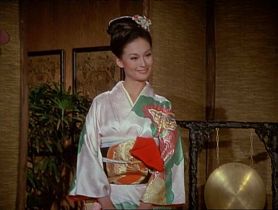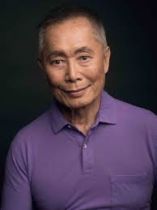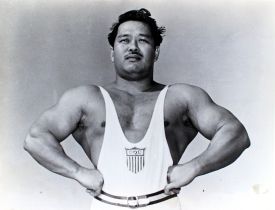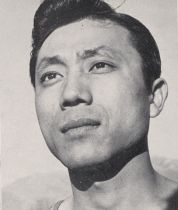Category:Nikkei: Difference between revisions
mNo edit summary |
mNo edit summary Tags: Mobile edit Mobile web edit |
||
| (3 intermediate revisions by the same user not shown) | |||
| Line 2: | Line 2: | ||
File:Helen Funai.jpg|[[Helen Funai]] | File:Helen Funai.jpg|[[Helen Funai]] | ||
File:Jack_soo_01.jpg|[[Jack Soo]] | File:Jack_soo_01.jpg|[[Jack Soo]] | ||
File:George_takei_01.jpg|[[George Takei]] | File:George_takei_01.jpg|[[George Takei]] | ||
File:Harold sakata.jpg|[[Harold Sakata]] | File:Harold sakata.jpg|[[Harold Sakata]] | ||
| Line 8: | Line 7: | ||
File:Steve_yano.jpg|[[Steve Yano]] | File:Steve_yano.jpg|[[Steve Yano]] | ||
</gallery> | </gallery> | ||
Need to research: | |||
* [[Tricia Fukuhara]] from Grease: The Rise of the Pink Ladies | |||
Let's talk about being a [[:Category: Gen X Nikkei]]. | Let's talk about being a [[:Category: Gen X Nikkei]]. | ||
| Line 13: | Line 16: | ||
* [[101 Ways to Tell You’re Japanese American]] | * [[101 Ways to Tell You’re Japanese American]] | ||
[[:Category:🇺🇸🇯🇵|🇺🇸🇯🇵]] The Japanese diaspora, and its individual members known as nikkei (日系) or nikkeijin (日系人), are the Japanese immigrants from Japan and their descendants that reside in a foreign country. Emigration from Japan was recorded as early as the 15th century to the Philippines, but did not become a mass phenomenon until the Meiji period, when Japanese began to go to the Philippines and the Americas. There was also significant emigration to the territories of the Empire of Japan during the colonial period; however, most emigrants repatriated to Japan after the surrender of Japan and the end of World War II in Asia. | [[:Category:🇺🇸🇯🇵|🇺🇸🇯🇵]] The Japanese diaspora, and its individual members known as nikkei (日系) or nikkeijin (日系人), are the Japanese immigrants from Japan and their descendants that reside in a foreign country. Emigration from Japan was recorded as early as the 15th century to the Philippines, but did not become a mass phenomenon until the Meiji period, when Japanese began to go to the Philippines and the Americas. There was also significant emigration to the territories of the Empire of Japan during the colonial period; however, most emigrants repatriated to Japan after the surrender of Japan and the end of World War II in Asia. | ||
| Line 23: | Line 21: | ||
As of 2018, the Ministry of Foreign Affairs report that the top 5 countries with the highest number of Japanese expatriates are the United States (426,206), China (124,162), Australia (97,223), Thailand (72,754) and Canada (70,025). | As of 2018, the Ministry of Foreign Affairs report that the top 5 countries with the highest number of Japanese expatriates are the United States (426,206), China (124,162), Australia (97,223), Thailand (72,754) and Canada (70,025). | ||
[[Category: 🇺🇸🇯🇵]] | [[Category: 🇺🇸🇯🇵]] | ||
[[Category: Culture]] | [[Category: Culture]] | ||
[[Category: Collections]] | [[Category: Collections]] | ||
Latest revision as of 23:52, 1 May 2024
Need to research:
- Tricia Fukuhara from Grease: The Rise of the Pink Ladies
Let's talk about being a Category: Gen X Nikkei.
🇺🇸🇯🇵 The Japanese diaspora, and its individual members known as nikkei (日系) or nikkeijin (日系人), are the Japanese immigrants from Japan and their descendants that reside in a foreign country. Emigration from Japan was recorded as early as the 15th century to the Philippines, but did not become a mass phenomenon until the Meiji period, when Japanese began to go to the Philippines and the Americas. There was also significant emigration to the territories of the Empire of Japan during the colonial period; however, most emigrants repatriated to Japan after the surrender of Japan and the end of World War II in Asia.
According to the Association of Nikkei and Japanese Abroad, there are about 3.8 million nikkei living in their adopted countries. The largest of these foreign communities are in Brazil, the United States, the Philippines, China, Canada, and Peru. Descendants of emigrants from the Meiji period still hold recognizable communities in those countries, forming separate ethnic groups from Japanese people in Japan. Nevertheless, most Japanese are largely assimilated outside of Japan.
As of 2018, the Ministry of Foreign Affairs report that the top 5 countries with the highest number of Japanese expatriates are the United States (426,206), China (124,162), Australia (97,223), Thailand (72,754) and Canada (70,025).
Subcategories
This category has the following 11 subcategories, out of 11 total.
Pages in category "Nikkei"
The following 172 pages are in this category, out of 172 total.
A
B
C
F
H
J
K
M
- Mago’s
- Maneki-neko
- Manzanar
- Manzanar Pilgrimage
- Mari Matsuda
- Marii Hasegawa
- Members Only Jacket
- Mich Matsudaira
- Michio Kaku
- Miiko Taka
- Mike Masaoka
- Miko Mayama
- Mineo Katagiri
- Miniature Zori Keychains
- MIS
- Mitchell Sakamoto
- Miya Shimada (New Earth)
- Miyoshi Umeki
- Momo Yashima
- Mr. Miyagi (Character)
- Mrs. Livingston (The Courtship of Eddie's Father)





